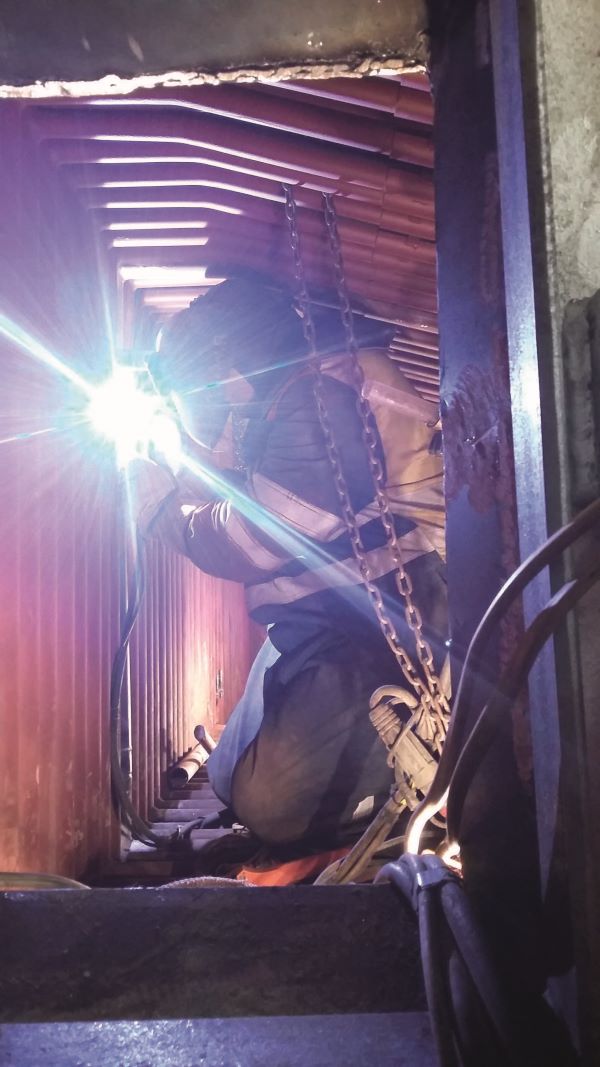Confined space work poses unique challenges. It requires specialised training and awareness of potential risks. Among the numerous factors influencing safety in such environments, temperature stands as a significant, often underestimated, variable.
The temperature within confined spaces, whether hot or cold, can significantly impact the risks associated with the work conducted within them.
Risks of Working in Confined Spaces
Before delving into temperature's influence, it's imperative to acknowledge common risks associated with confined space work, termed Specified Risks.
Confined spaces often present risks related to poor air quality, limited ventilation that may leading to low oxygen levels, potential presence of toxic gases, asphyxiating gases, fumes or vapours, fire or explosion hazards and other physical hazards such as free-flowing solids causing, entrapment, or engulfment of a person leading to asphyxiation. There may also be a rise in the level of liquid that may cause a person to drown.
The nature of these risks can be exacerbated by temperature variations, creating additional challenges for workers.
The 1997 Confined Space Regulations provides a definition of specified risks as mentioned above and one of those is “A loss of consciousness of any person at work arising from an increase in body temperature.”
The effect of cold is not covered by the specified risks in the confined space regulations 1997. However, there is guidance in section 4 regarding Limiting Working Time:
137 - There may be additional risks to consider when entry to a confined space is required. These could include the integrity of the confined space (e.g. corroded structure, cold temperatures, etc).
This is a significant hazard to consider when working in some confined spaces, such as warehouse chillers and freezers.
How Heat Affects Confined Space Risks
Hot conditions can give rise to a dangerous increase in the core body temperature. This situation can be exaggerated within a confined space through:
- The wearing of PPE: Certain tasks may necessitate specialised PPE like fire-rated coveralls or waterproof clothing, impacting heat regulation.
- Physical exertion: Strenuous work can raise core temperature, especially with cumbersome PPE and poor ventilation.
- When equipment has been part of a hot processes: For example, a boiler, oven or kiln has not been left to cool for enough time due to the commercial pressures of getting back into service as quickly as possible.
- Heat-generating equipment usage: Equipment that is being used during confined space work may add to the heat within the environment (e.g. steam cleaning equipment, the use of burning and welding equipment).
- Sun exposure challenges: Spaces exposed to direct sunlight can magnify the heat's impact, especially where coupled with residual liquids that may evaporate and increase humidity levels.

Common Heat Illnesses Associated with Working in Confined Spaces
Gradual thermal build-up in a confined space can result in heat exhaustion. If this is not identified and actions not taken to cool the body, it may develop into heat stroke (a life-threatening condition).
Heat Exhaustion
Heat exhaustion is a heat-related illness that occurs when the body overheats due to prolonged exposure to high temperatures and inadequate fluid intake. It is often a precursor to more severe heat-related conditions.
Symptoms include.
- Undue Fatigue
- Headache
- Nausea, Vomiting
- Giddiness
- Deluge of sweating
Heat Stroke
Heat stroke is a serious heat related illness. Its most characteristic feature is a marked reduction or complete cessation of sweating. The skin will be dry and hot and may be red mottled or have a bluey hue (cyanosed).
Anyone who cannot sweat efficiently cannot cool so there will be a marked increase in body core temperature. If this happens you must come out of the area immediately and seek medical advice. Heat stroke should never be ignored as, without proper treatment, it may progress and make you seriously ill.

Safe Temperatures for Confined Space Work
While a universally defined 'safe' temperature remains elusive due to variability, maintaining temperatures within 68-74°F (20-23°C) is considered optimal. The bodies normal temperature is 36-37◦C so if the body core temperature rises above this, heat related illness is likely to follow.
It should also be noted that a microclimate can occur inside a person’s clothing due to PPE and layers, particularly waterproof clothing. This can be exaggerated further by humidity in the air which in turn may elevate body core temperature quicker than might be expected if simply measuring ambient temperature before entering a confined space.
Measuring the rise in a person’s body temperature is not an easy thing to do. The only accurate methods involve taking readings from in the ear, the temporal lobe or the rectum — none of which are practicable or desirable for a person working.
Minimising the Effects of Temperature in Confined Spaces
Things you can do personally
- Drink 150-220ml of water every 15-20 minutes
- Make sure you eat during the shift
- A gradual introduction to the climate makes acclimatisation easier
- Seek occupational medical advice if you are taking medication or suffering from illness
- Avoid alcohol
Heat can affect two persons in the same location differently. It comes down to physical fitness/health age, medication, diet, pre-existing medical conditions, personal management of hydration, and differing rates of physical exertion.
Operational considerations
- Ventilation
Adequate ventilation plays a pivotal role in managing temperature in confined spaces. Proper airflow helps in regulating the internal environment, minimising the build-up of heat or cold.
Increase natural ventilation by opening as many access points as possible or by using mechanical ventilation fans and ducting to force ventilate the space to provide cooling. Exhaust ventilation can also be used to extract hot air and draw in cooler air — or both systems can be used in conjunction for best results.
- Personal protective equipment
Consider what is required for the task and if there is a lightweight option. Thinner material can prevent the build up of body heat in a confined space.
Equipping workers with appropriate personal protective equipment (PPE) designed to handle extreme temperatures, such as insulating clothing for cold environments or cooling vests for hot spaces, can mitigate the impact of temperature.
Be aware, for example, that a cooling vest will give a superficial cooling effect but will not actually cool the body core temperature on its own.
- Regular monitoring
Implementing a monitoring system to continuously assess temperature variations, air quality, and other environmental factors within the confined space is crucial. This allows for prompt action in case of hazardous changes.
Consider the need to measure Wet Bulb Globe Temperature (WBGT) if there is moisture in the atmosphere where work is taking place. Measuring ambient air temperature alone will not give a true reflection of the effects of heat and humidity when combined.
Where WBGT measurements are required, it is often necessary to consult a confined spaces health and safety professional to ensure that all possible safety measures are accounted for before any work commences.
Confined Space Training: A Safety Imperative
Whether temperature is expected to be a risk factor or not, working in confined spaces is a dangerous undertaking and requires specialist training to ensure the safety of those involved.
At MRS Training and Rescue, our team of seasoned confined space experts provide essential training for professionals whose roles involve working in these challenging circumstances.
Our state-of-the-art facilities are designed to emulate a myriad of confined space scenarios across a variety of industries – providing hands-on, practical experience.
Contact us today to book individuals or whole teams in for confined space training with MRS.
Conclusion
Temperature significantly influences the risks associated with working in confined spaces. Understanding and addressing the impact of temperature variations is crucial to ensure the safety and well-being of workers in such environments.
By adhering to regulations, implementing proactive measures, and employing appropriate safety protocols, the risks related to temperature fluctuations in confined spaces can be mitigated, fostering a safer work environment for all involved.




